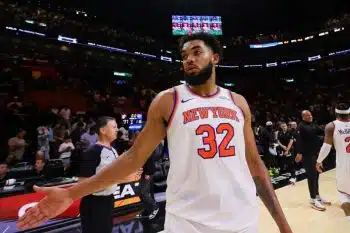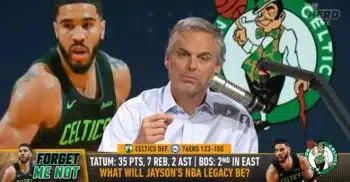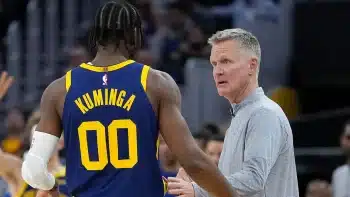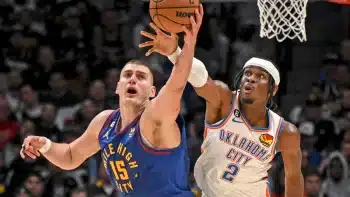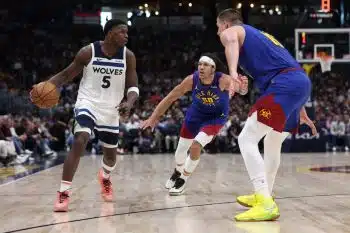NBA
NBA AM: Living And Dying By The Three Ball
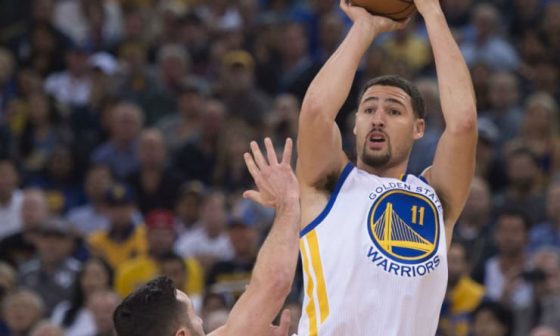
If you live long enough, you’ll quickly come to the conclusion that change is inevitable. Whether or not the change is for the good usually falls into the eyes of the beholder. Basketball purists, the keepers of the old school rules, are often resistant to fundamental changes in how the game is played. However, the new school fan views the evolving nature of the game as just a natural part of the evolutionary process.
On which side do you fall?
One of the biggest debate topics between old and new school factions usually centers on the rise of the three-point shot around the league. Three-point shot attempt usage has evolved from moderate utilization and mostly in times of desperation—such as trying to mount a furious comeback—into a luxury line item for the majority of teams around the league.
The old adage of “jump shooting teams” not having what it takes to win it all has gone out the window. The past two NBA champions, the Golden State Warriors and Cleveland Cavaliers, were heavily reliant on their respective prowess from deep. The NBA is a trends league and opposing teams often emulate the successful units’ style of play.
Not surprisingly, the three-point shot attempt has become the new and shiny toy. Taking a quick look at the overall statistics, at a high level, easily captures the rise in popularity of the three ball.
Total Three-Point Shot Attempts (Entire League)
Source: NBA Stats
2013-14: 52,570
2014-15: 54,840
2015-16: 59,501
2016-17: 65,936
Since the 2013-14 campaign, league three-point shot attempts have risen in total. But this isn’t simply a matter of the long ball shot attempts being influenced by a few teams at the top of the food chain. No, digging deeper and the metrics show the three-point shot is being much more heavily included in offensive attacks around the league
Number of teams with three-point attempts greater than 30 percent of their overall field goal attempts
2013-14: 5
2014-15: 8
2015-16: 11
2016-17: 17 (doesn’t include the Oklahoma City and Los Angeles Clippers – both at 29.5 percent)
The top three teams in regards to three-point shot attempts to field goal attempt ratio this season are Houston (46.3 percent), Cleveland (39.9 percent) and Boston (39.3 percent). All three of these squads look poised for a trip to the Conference Finals. Dallas (36.7 percent) and Brooklyn (36.7 percent) were tied for fourth and the Golden State Warriors (35.4 percent) round out the top five.
Even teams that play a more traditional style have adopted the three-point philosophy. Case in point, only 17 percent of the Memphis Grizzlies’ field goal attempts during the 2013-14 campaign were three-point shots. This past season, Memphis was ranked No. 11 in the league in three-point frequency (31.6 percent).
The conversation has switched from debating whether or not a team can win at a high-level with a heavy reliance on outside marksmanship, to the odds being stacked against the franchises slow to get with the changing times.
The bottom five teams in the league this past season in three-point attempt frequency were the Indiana Pacers, Detroit Pistons, Chicago Bulls, Phoenix Suns and Minnesota Timberwolves. All five teams are currently watching the playoffs from the comfort of their own homes.
The Pacers were unceremoniously swept by the Cavaliers in the first round of the playoffs. The Bulls barely made the playoffs and were dispatched by the Celtics in the opening round. The Pistons, Suns and Timberwolves are each headed to the draft lottery.
Of course, defensive efficiency and the ability to get critical stops on the other side of the ball remains an integral part of an elite team’s repertoire. Defense is still extremely important. However, the increasing barrage of shots from way downtown continues to clearly illustrate that shot makers are at a premium, while rugged post play and the mid-range game are being reduced to “nice to have” pieces of a team’s playbook.
As the game continues to evolve, it will be interesting to see how coaches respond to the increase in the dependence on the three-point shot. One thing is for sure, though, the old adage of shooting teams not being able to win it all is a thing of the past.
